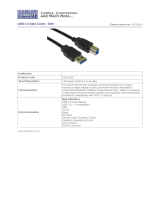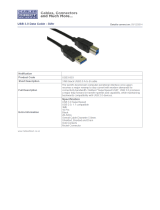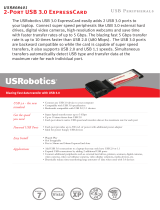Page is loading ...

Dell Vostro 3070
Service Manual
Regulatory Model: D19M
Regulatory Type: D19M005

Notes, cautions, and warnings
NOTE: A NOTE indicates important information that helps you make better use of your product.
CAUTION: A CAUTION indicates either potential damage to hardware or loss of data and tells you how to avoid the
problem.
WARNING: A WARNING indicates a potential for property damage, personal injury, or death.
© 2018 - 2019 Dell Inc. or its subsidiaries. All rights reserved. Dell, EMC, and other trademarks are trademarks of Dell Inc. or its
subsidiaries. Other trademarks may be trademarks of their respective owners.
2019 - 04
Rev. A01

1 Working on your computer............................................................................................................ 5
Safety instructions................................................................................................................................................................ 5
Turning off your computer — Windows 10....................................................................................................................... 5
Before working inside your computer................................................................................................................................. 5
After working inside your computer....................................................................................................................................6
2 Technology and components......................................................................................................... 7
HDMI 1.4..................................................................................................................................................................................7
USB features.......................................................................................................................................................................... 7
3 Removing and installing components............................................................................................ 10
Recommended tools............................................................................................................................................................ 10
Screw list and images.......................................................................................................................................................... 10
System board layout.............................................................................................................................................................11
Cover...................................................................................................................................................................................... 11
Removing the cover........................................................................................................................................................11
Installing the cover......................................................................................................................................................... 13
Front Bezel............................................................................................................................................................................15
Removing the front bezel..............................................................................................................................................15
Installing the front bezel................................................................................................................................................ 17
Hard drive..............................................................................................................................................................................19
Removing 3.5 inches hard drive assembly - optional.................................................................................................19
Installing 3.5 inches hard drive assembly - optional.................................................................................................. 22
Memory modules................................................................................................................................................................. 25
Removing memory module...........................................................................................................................................25
Installing the memory module...................................................................................................................................... 26
Power supply unit................................................................................................................................................................26
Removing power supply unit........................................................................................................................................26
Installing power supply unit.......................................................................................................................................... 30
Cooling shroud..................................................................................................................................................................... 34
Removing the cooling shroud.......................................................................................................................................34
Installing the cooling shroud.........................................................................................................................................36
Heat sink assembly..............................................................................................................................................................38
Removing the heat sink assembly............................................................................................................................... 38
Installing the heat sink assembly..................................................................................................................................40
Coin-cell battery.................................................................................................................................................................. 42
Removing the coin cell battery.................................................................................................................................... 42
Installing the coin cell battery.......................................................................................................................................43
Processor..............................................................................................................................................................................44
Removing the processor...............................................................................................................................................44
Installing the processor................................................................................................................................................. 45
System board.......................................................................................................................................................................46
Removing the system board........................................................................................................................................ 46
Installing the system board...........................................................................................................................................52
Contents
Contents 3

4 Troubleshooting......................................................................................................................... 59
Enhanced Pre-Boot System Assessment — ePSA diagnostics................................................................................... 59
Running the ePSA Diagnostics.................................................................................................................................... 59
Diagnostics........................................................................................................................................................................... 59
Diagnostic error messages................................................................................................................................................. 60
System error messages...................................................................................................................................................... 62
5 Getting help...............................................................................................................................64
Contacting Dell.................................................................................................................................................................... 64
4 Contents

Working on your computer
Safety instructions
Use the following safety guidelines to protect your computer from potential damage and to ensure your personal safety. Unless otherwise
noted, each procedure included in this document assumes that the following conditions exist:
• You have read the safety information that shipped with your computer.
• A component can be replaced or, if purchased separately, installed by performing the removal procedure in the reverse order.
NOTE: Disconnect all power sources before opening the computer cover or panels. After you finish working inside the
computer, replace all covers, panels, and screws before connecting to the power source.
NOTE: Before working inside your computer, read the safety information that shipped with your computer. For
additional safety best practices information, see the Regulatory Compliance Homepage at www.dell.com/
regulatory_compliance
CAUTION: Many repairs may only be done by a certified service technician. You should only perform troubleshooting and
simple repairs as authorized in your product documentation, or as directed by the online or telephone service and
support team. Damage due to servicing that is not authorized by Dell is not covered by your warranty. Read and follow
the safety instructions that came with the product.
CAUTION: To avoid electrostatic discharge, ground yourself by using a wrist grounding strap or by periodically touching
an unpainted metal surface that is grounded to ground yourself before you touch the computer to perform any
disassembly tasks.
CAUTION: Handle components and cards with care. Do not touch the components or contacts on a card. Hold a card by
its edges or by its metal mounting bracket. Hold a component such as a processor by its edges, not by its pins.
CAUTION: When you disconnect a cable, pull on its connector or on its pull-tab, not on the cable itself. Some cables
have connectors with locking tabs; if you are disconnecting this type of cable, press in on the locking tabs before you
disconnect the cable. As you pull connectors apart, keep them evenly aligned to avoid bending any connector pins. Also,
before you connect a cable, ensure that both connectors are correctly oriented and aligned.
NOTE: The color of your computer and certain components may appear differently than shown in this document.
Turning off your computer — Windows 10
CAUTION:
To avoid losing data, save and close all open files and exit all open programs before you turn off your
computer or remove the side cover.
1. Click or tap .
2. Click or tap and then click or tap Shut down.
NOTE:
Ensure that the computer and all attached devices are turned off. If your computer and attached devices did
not automatically turn off when you shut down your operating system, press and hold the power button for about 6
seconds to turn them off.
Before working inside your computer
1. Ensure that your work surface is flat and clean to prevent the computer cover from being scratched.
2. Turn off your computer.
1
Working on your computer 5

3. Disconnect all network cables from the computer (if available).
CAUTION: If your computer has an RJ45 port, disconnect the network cable by first unplugging the cable from your
computer.
4. Disconnect your computer and all attached devices from their electrical outlets.
5. Open the display.
6. Press and hold the power button for few seconds, to ground the system board.
CAUTION: To guard against electrical shock unplug your computer from the electrical outlet before performing Step
# 8.
CAUTION: To avoid electrostatic discharge, ground yourself by using a wrist grounding strap or by periodically
touching an unpainted metal surface at the same time as touching a connector on the back of the computer.
7. Remove any installed ExpressCards or Smart Cards from the appropriate slots.
After working inside your computer
After you complete any replacement procedure, ensure that you connect external devices, cards, and cables before turning on your
computer.
CAUTION: To avoid damage to the computer, use only the battery designed for this particular Dell computer. Do not use
batteries designed for other Dell computers.
1. Connect any external devices, such as a port replicator or media base, and replace any cards, such as an ExpressCard.
2. Connect any telephone or network cables to your computer.
CAUTION:
To connect a network cable, first plug the cable into the network device and then plug it into the
computer.
3. Connect your computer and all attached devices to their electrical outlets.
4. Turn on your computer.
6
Working on your computer

Technology and components
This chapter details the technology and components available in the system.
Topics:
• HDMI 1.4
• USB features
HDMI 1.4
This topic explains the HDMI 1.4 and its features along with the advantages.
HDMI (High-Definition Multimedia Interface) is an industry-supported, uncompressed, all-digital audio/video interface. HDMI provides an
interface between any compatible digital audio/video source, such as a DVD player, or A/V receiver and a compatible digital audio and/or
video monitor, such as a digital TV (DTV). The intended applications for HDMI TVs, and DVD players. The primary advantage is cable
reduction and content protection provisions. HDMI supports standard, enhanced, or high-definition video, plus multichannel digital audio
on a single cable.
NOTE:
The HDMI 1.4 will provide 5.1 channel audio support.
HDMI 1.4 Features
• HDMI Ethernet Channel - Adds high-speed networking to an HDMI link, allowing users to take full advantage of their IP-enabled
devices without a separate Ethernet cable
• Audio Return Channel - Allows an HDMI-connected TV with a built-in tuner to send audio data "upstream" to a surround audio
system, eliminating the need for a separate audio cable
• 3D - Defines input/output protocols for major 3D video formats, paving the way for true 3D gaming and 3D home theater applications
• Content Type - Real-time signaling of content types between display and source devices, enabling a TV to optimize picture settings
based on content type
• Additional Color Spaces - Adds support for additional color models used in digital photography and computer graphics
• 4K Support - Enables video resolutions far beyond 1080p, supporting next-generation displays that will rival the Digital Cinema
systems used in many commercial movie theaters
• HDMI Micro Connector - A new, smaller connector for phones and other portable devices, supporting video resolutions up to 1080p
• Automotive Connection System - New cables and connectors for automotive video systems, designed to meet the unique
demands of the motoring environment while delivering true HD quality
Advantages of HDMI
• Quality HDMI transfers uncompressed digital audio and video for the highest, crispest image quality.
• Low -cost HDMI provides the quality and functionality of a digital interface while also supporting uncompressed video formats in a
simple, cost-effective manner
• Audio HDMI supports multiple audio formats from standard stereo to multichannel surround sound
• HDMI combines video and multichannel audio into a single cable, eliminating the cost, complexity, and confusion of multiple cables
currently used in A/V systems
• HDMI supports communication between the video source (such as a DVD player) and the DTV, enabling new functionality
USB features
Universal Serial Bus, or USB, was introduced in 1996. It dramatically simplified the connection between host computers and peripheral
devices like mice, keyboards, external drivers, and printers.
Let's take a quick look on the USB evolution referencing to the table below.
2
Technology and components 7

Table 1. USB evolution
Type Data Transfer Rate Category Introduction Year
USB 2.0 480 Mbps High Speed 2000
USB 3.0/USB 3.1 Gen 1 5 Gbps Super Speed 2010
USB 3.1 Gen 2 10 Gbps Super Speed 2013
USB 3.0/USB 3.1 Gen 1 (SuperSpeed USB)
For years, the USB 2.0 has been firmly entrenched as the de facto interface standard in the PC world with about 6 billion devices sold, and
yet the need for more speed grows by ever faster computing hardware and ever greater bandwidth demands. The USB 3.0/USB 3.1 Gen 1
finally has the answer to the consumers' demands with a theoretically 10 times faster than its predecessor. In a nutshell, USB 3.1 Gen 1
features are as follows:
• Higher transfer rates (up to 5 Gbps)
• Increased maximum bus power and increased device current draw to better accommodate power-hungry devices
• New power management features
• Full-duplex data transfers and support for new transfer types
• Backward USB 2.0 compatibility
• New connectors and cable
The topics below cover some of the most commonly asked questions regarding USB 3.0/USB 3.1 Gen 1.
Speed
Currently, there are 3 speed modes defined by the latest USB 3.0/USB 3.1 Gen 1 specification. They are Super-Speed, Hi-Speed and Full-
Speed. The new SuperSpeed mode has a transfer rate of 4.8Gbps. While the specification retains Hi-Speed, and Full-Speed USB mode,
commonly known as USB 2.0 and 1.1 respectively, the slower modes still operate at 480Mbps and 12Mbps respectively and are kept to
maintain backward compatibility.
USB 3.0/USB 3.1 Gen 1 achieves the much higher performance by the technical changes below:
• An additional physical bus that is added in parallel with the existing USB 2.0 bus (refer to the picture below).
• USB 2.0 previously had four wires (power, ground, and a pair for differential data); USB 3.0/USB 3.1 Gen 1 adds four more for two
pairs of differential signals (receive and transmit) for a combined total of eight connections in the connectors and cabling.
• USB 3.0/USB 3.1 Gen 1 utilizes the bidirectional data interface, rather than USB 2.0's half-duplex arrangement. This gives a 10-fold
increase in theoretical bandwidth.
With today's ever increasing demands placed on data transfers with high-definition video content, terabyte storage devices, high
megapixel count digital cameras etc., USB 2.0 may not be fast enough. Furthermore, no USB 2.0 connection could ever come close to the
8
Technology and components

480Mbps theoretical maximum throughput, making data transfer at around 320Mbps (40MB/s) — the actual real-world maximum.
Similarly, USB 3.0/USB 3.1 Gen 1 connections will never achieve 4.8Gbps. We will likely see a real-world maximum rate of 400MB/s with
overheads. At this speed, USB 3.0/USB 3.1 Gen 1 is a 10x improvement over USB 2.0.
Applications
USB 3.0/USB 3.1 Gen 1 opens up the laneways and provides more headroom for devices to deliver a better overall experience. Where USB
video was barely tolerable previously (both from a maximum resolution, latency, and video compression perspective), it's easy to imagine
that with 5-10 times the bandwidth available, USB video solutions should work that much better. Single-link DVI requires almost 2Gbps
throughput. Where 480Mbps was limiting, 5Gbps is more than promising. With its promised 4.8Gbps speed, the standard will find its way
into some products that previously weren't USB territory, like external RAID storage systems.
Listed below are some of the available SuperSpeed USB 3.0/USB 3.1 Gen 1 products:
• External Desktop USB 3.0/USB 3.1 Gen 1 Hard Drives
• Portable USB 3.0/USB 3.1 Gen 1 Hard Drives
• USB 3.0/USB 3.1 Gen 1 Drive Docks & Adapters
• USB 3.0/USB 3.1 Gen 1 Flash Drives & Readers
• USB 3.0/USB 3.1 Gen 1 Solid-state Drives
• USB 3.0/USB 3.1 Gen 1 RAIDs
• Optical Media Drives
• Multimedia Devices
• Networking
• USB 3.0/USB 3.1 Gen 1 Adapter Cards & Hubs
Compatibility
The good news is that USB 3.0/USB 3.1 Gen 1 has been carefully planned from the start to peacefully co-exist with USB 2.0. First of all,
while USB 3.0/USB 3.1 Gen 1 specifies new physical connections and thus new cables to take advantage of the higher speed capability of
the new protocol, the connector itself remains the same rectangular shape with the four USB 2.0 contacts in the exact same location as
before. Five new connections to carry receive and transmitted data independently are present on USB 3.0/USB 3.1 Gen 1 cables and only
come into contact when connected to a proper SuperSpeed USB connection.
Windows 8/10 will be bringing native support for USB 3.1 Gen 1 controllers. This is in contrast to previous versions of Windows, which
continue to require separate drivers for USB 3.0/USB 3.1 Gen 1 controllers.
Microsoft announced that Windows 7 would have USB 3.1 Gen 1 support, perhaps not on its immediate release, but in a subsequent
Service Pack or update. It is not out of the question to think that following a successful release of USB 3.0/USB 3.1 Gen 1 support in
Windows 7, SuperSpeed support would trickle down to Vista. Microsoft has confirmed this by stating that most of their partners share the
opinion that Vista should also support USB 3.0/USB 3.1 Gen 1.
Technology and components
9

Removing and installing components
Recommended tools
The procedures in this document require the following tools:
• Phillips #0 screwdriver
• Phillips #1 screwdriver
• Plastic scribe
NOTE:
The #0 screw driver is for screws 0-1 and the #1 screw driver is for screws 2-4
Screw list and images
Table 2. Vostro 3070 screw size list
Component Screw type Quanti
ty
Image Color
Power supply
Side cover
I/O bracket
Systemboard
PCIe bracket
#6.32xL6.35
4
2
1
8
1
Black
3.5 Hard drive (Optional)
#6.32UNCx3.6
4
Silver
3
10 Removing and installing components

System board layout
1.
Power switch connector
2. Coin-cell battery Connector
3. SATA 0 Connector (Blue color)
4. HDD_ODD_PowerCable Connector (SATA_PWR)
5. ATX Power Connector (ATX_SYS)
6. Service mode / password clear/CMOS clear jumpers
7. CPU Power Connector (ATX_CPU)
8. Processor Socket (CPU)
9. CPU Fan Connector (FAN_CPU)
10. Memory Connectors (DIMM1/DIMM2)
Cover
Removing the cover
1. Follow the procedure in Before working inside your computer.
2. To remove the cover:
Removing and installing components
11

a) Remove the two (6-32x6.35) screws that secure the cover to the computer [1] and pull the cover away from the system [2].
b) Lift the cover.
12 Removing and installing components

Installing the cover
1. Place the cover on the computer and slide the cover forward until the latches snap-in [1].
Removing and installing components
13

2. Tighten the two (6-32x6.35) screws to secure the cover to the computer [2].
14
Removing and installing components

3. Follow the procedure in After working inside your computer.
Front Bezel
Removing the front bezel
1. Follow the procedure in Before working inside your computer.
2. Remove the Cover.
3. To remove the bezel:
a) Lift the three latches to release the bezel from the chassis [1].
b) Lift the chassis, rotate and pull the front bezel away from the computer to release the tabs [2].
Removing and installing components
15

c) Lift the chassis and remove the front bezel from the chassis
16
Removing and installing components

Installing the front bezel
1. Position the bezel to align the tab holders on the chassis [1].
Removing and installing components
17

2. Rotate the bezel until the tabs clicks into place [2].
18
Removing and installing components

3. Install the Cover.
4. Follow the procedure in After working inside your computer.
Hard drive
Removing 3.5 inches hard drive assembly - optional
1. Follow the procedure in Before working inside your computer.
2. Remove the:
a) Cover
b) Front bezel
3. To remove the hard drive assembly:
a) Disconnect the hard drive data and power cables from the connectors on the hard drive.
Removing and installing components
19

b) Remove the four (6-32x3.6) screws that secure the hard drive assembly to the base and front of the chassis.
20
Removing and installing components
/




